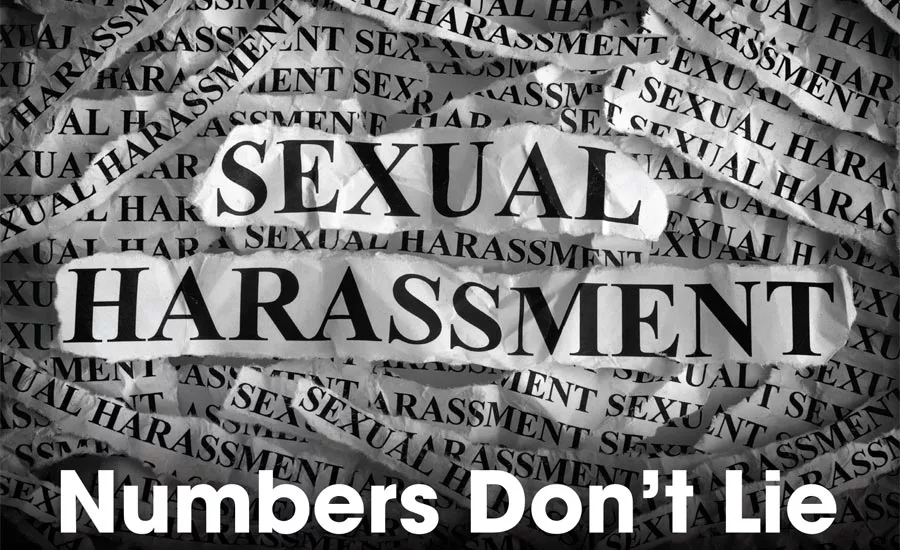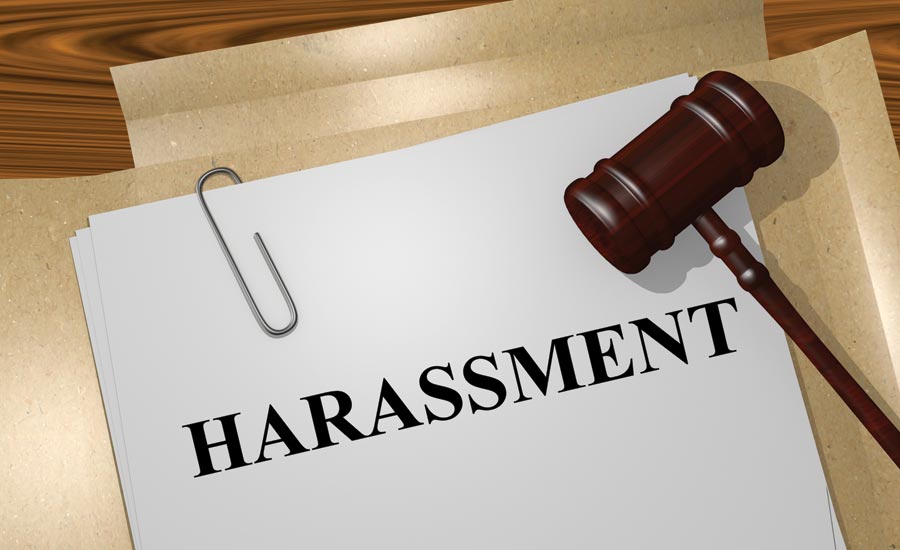Numbers Don't Lie: Do Your Insurance Policies Measure Up?

No restoration contractor would consider going without their General Liability or Property insurance, yet studies have shown you are more likely to have an Employment Practices Liability (EPL) claim than either of those. The number one area for litigation over the past three years has been labor and employment matters. Many restorers think their business is too small and an EPL claim could not happen to them, but more than 40% of all EPL claims are brought against private employers with fewer than 100 employees. Even if you treat your people like family rather than employees, the U.S. Equal Employment Opportunity Commission (EEOC) has found that you have a 12% chance of some sort of discrimination charge being filed against your business.
The EEOC and the Select Task Force on the Study of Harassment in the Workplace put together an excellent report with all kinds of statistics, examples, ideas for training, as well as some solutions that can be implemented. What I found most interesting was that of all the harassment charges the EEOC received, approximately:
- 45% alleged harassment on the basis of sex,
- 34% alleged harassment on the basis of race,
- 19% alleged harassment on the basis of disability,
- 15% alleged harassment on the basis of age,
- 13% alleged harassment on the basis of national origin,
- and 5% alleged harassment on the basis of religion.
(Percentages do not total 100%, as individuals sometimes file charges or complaints of harassment on the basis of more than one protected characteristic.)
There were roughly 30,000 harassment charges reported to the EEOC last year. With 45% of the harassment charges being sexual, that equates to approximately 13,500 claims in a year. Take that figure and divide it by 2,080, 40 hours per week over the 52 weeks of the year, and you have 6.5 sexual harassment claims being reported per working hour. That is a very alarming figure.
Surprisingly, roughly three out of four individuals who experience harassment never talk with their supervisor out of fear of retaliation. Some may think they could get a negative review, decrease in responsibility, excluded from team meetings, or even fired. Even though we are in a very litigious era, the least common response is to take formal legal action. Studies have found that only 6% - 13% of individuals who experience harassment file a formal complaint. That means that nearly 90% did not file anything.
I would venture to say that this number is likely to increase in the coming months. With everything going on in Hollywood, including the #MeToo movement, more and more people are coming out alleging sexual harassment. Whether you think that it has gone too far, or some are starving for attention, one must assume that with more publicity, more and more people will feel that it is easier to speak up for themselves or their colleagues.
According to a recent study by Hiscox Insurance, nearly 20% of harassment claims resulted in defense and settlement, where the average cost to defend and settle was over $125,000 per claim. For the other 80% that did not result in payment made by their carrier, there were still precious time, energy, and resources required to handle them internally. On average, this cost the business owner 275 days. Not only are there wasted opportunity costs, but let’s not forget the indirect costs such as decreased productivity, increase employee turnover and reputational damage.

The number one area for litigation over the past three years has been labor and employment matters.
Employment Practices Liability is Not Covered by General Liability
Many General Liability policies have a total exclusion for Employment Practices, meaning you must buy a separate policy for that. Know that if you do not have an EPL policy, you are self-insuring your company for things like: discrimination, harassment, retaliation, wrongful termination, misrepresentation, negligent evaluation, failure to enforce policies, wrongful discipline, deprivation of career opportunity, as well as wage and hour claims, just to name a few.
In a recent example, I have a restorer who was being sued by a former employee for sexual harassment by her manager. She was in a sales position and reported to the “super star” sales manager. No one knew that the two were engaging in a more than friendly relationship. Even though after the fact it appeared to be consensual, the owner still had make a claim on their EPL policy to get defense. The saleswoman alleged that she was being sexually harassed and the words that were said drove her to relapse on alcoholism. She said she was in fear of saying anything because the “super star” manager could often do no wrong. After she quit, she checked herself into rehab, then hired an attorney once she finished the program. Looking for over $400,000 in damages, they ended up settling through arbitration for nearly $95,000, plus attorney fees. Luckily, this company purchased a separate EPL policy. Otherwise, they would have taken a six-figure hit that no one ever budgets for.
Other Provisions
You may have read articles on Claims-Made versus Occurrence reporting policies, but know that most EPL policies are sold Claims-Made. This means that it will only provide coverage after the retro-date (generally, the first date you purchased the coverage) and during the policy period. Once you stop purchasing the coverage, or let it lapse, you will not be able to turn in a claim. Also, most policies will have a Self-Insured Retention (SIR), rather than a deductible, which states that a specific dollar amount must be paid by the insured before the insurance policy will respond to a claim.
Some policies will have “Consent to Settle” language, also known as a “Hammer Clause”, which is not a benefit to the insured. As an example, you have a EPL claim that your attorney says can settle at $100,000, but you feel that is ridiculous and you did nothing wrong, so you tell them to fight it. Months pass through trial or arbitration, and the court finds that a $300,000 judgement is more reasonable as they want to make an example out of you. A “Hammer Clause” would make you responsible for any monetary value over what they could have settled for. In this example, the carrier would pay $100,000, and the insured would have to pay out $200,000 since you did not allow them to settle.

Your culture will have the greatest impact on allowing harassment to flourish, or on the other hand, preventing harassment. Leadership cannot be over-exaggerated.
There are two EPL endorsements you must be sure your agent includes in any EPL policy, as these are often excluded – Wage and Hour Coverage and Third-Party Coverage. Wage and Hour claims are the in-vogue lawsuit right now, as attorneys are happy to go after employers that failed to pay overtime wages owed to an employee. There have been some very high-profile, high-dollar Wage and Hour claims recently, which have driven the dollar amounts payable up substantially. Don’t be surprised to see commercials or billboards for attorney’s advertising, “Did you not get paid your overtime, or does a former employer still owe you money?” Third-Party coverage is also something that is not typically included. Know that you have more risk than just your employees suing you, as you can be held legally liable for what your employees do to others. I have seen lawsuits where a business’s own customer sues them because of discriminatory or harassing comments made by their employees. As crazy as it may seem, you can be held liable if you have an employee making sexual harassing comments to someone on social media while they are clocked in.
It Always Falls on Leadership
Your culture will have the greatest impact on allowing harassment to flourish, or on the other hand, preventing harassment. Leadership cannot be over-exaggerated. From a risk management perspective, effective training and accountability need to be the foundation in a zero-tolerance harassment culture. Through innovative approaches to training, I encourage empowering your employees by giving them the tools to intervene when they witness any harassing comments or behaviors. Ultimately, it is your responsibility as a business owner to understand your obligations under local, state, and federal anti-discrimination laws.
Frankly, EPL coverage should be one element of a robust risk management plan. I would estimate that less than 10% of restorers carry this coverage, and those who do, often buy it because they have had a complaint in the past that brought this coverage to their attention. It is a coverage that is not discussed or offered enough, simply because it has not been required by banks, property managers or TPA’s. There is one franchisor out there that has recently altered their insurance requirements to include EPL, so I would not be surprised to see others follow, especially since the awareness is rising. Do yourself a favor: ask your agent to give you an option. If you don’t, you could find yourself on the wrong side of a claim payment.
Looking for a reprint of this article?
From high-res PDFs to custom plaques, order your copy today!








